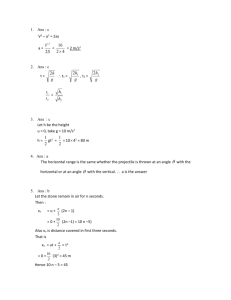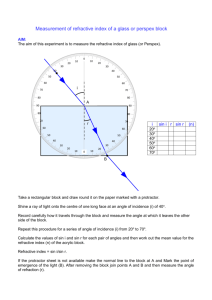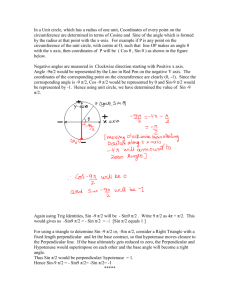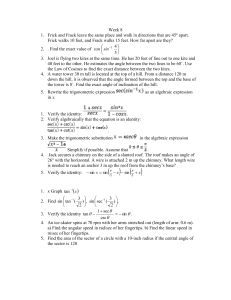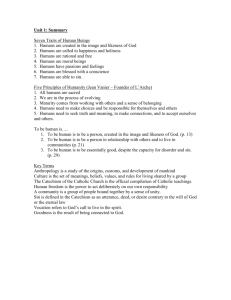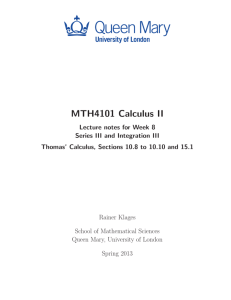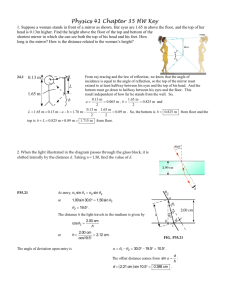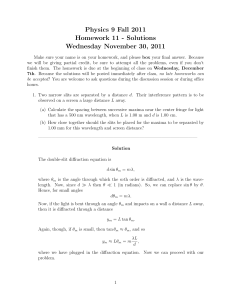Finite Arithmetic - IS MU
advertisement
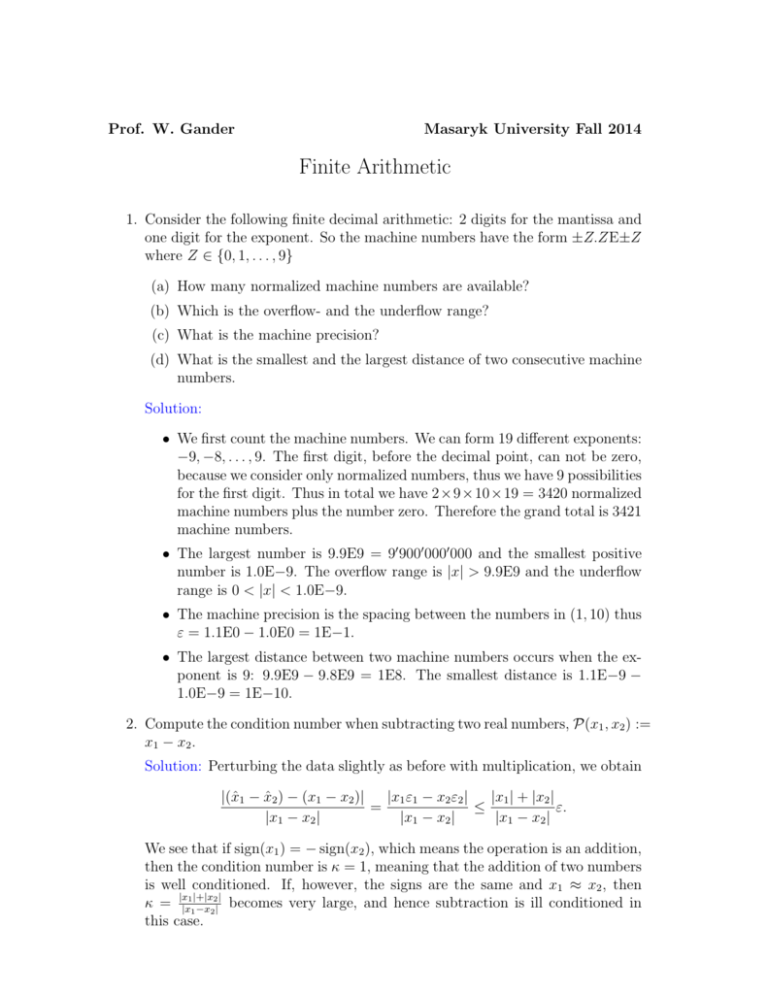
Prof. W. Gander
Masaryk University Fall 2014
Finite Arithmetic
1. Consider the following finite decimal arithmetic: 2 digits for the mantissa and
one digit for the exponent. So the machine numbers have the form ±Z.ZE±Z
where Z ∈ {0, 1, . . . , 9}
(a) How many normalized machine numbers are available?
(b) Which is the overflow- and the underflow range?
(c) What is the machine precision?
(d) What is the smallest and the largest distance of two consecutive machine
numbers.
Solution:
• We first count the machine numbers. We can form 19 different exponents:
−9, −8, . . . , 9. The first digit, before the decimal point, can not be zero,
because we consider only normalized numbers, thus we have 9 possibilities
for the first digit. Thus in total we have 2×9×10×19 = 3420 normalized
machine numbers plus the number zero. Therefore the grand total is 3421
machine numbers.
• The largest number is 9.9E9 = 90 9000 0000 000 and the smallest positive
number is 1.0E−9. The overflow range is |x| > 9.9E9 and the underflow
range is 0 < |x| < 1.0E−9.
• The machine precision is the spacing between the numbers in (1, 10) thus
ε = 1.1E0 − 1.0E0 = 1E−1.
• The largest distance between two machine numbers occurs when the exponent is 9: 9.9E9 − 9.8E9 = 1E8. The smallest distance is 1.1E−9 −
1.0E−9 = 1E−10.
2. Compute the condition number when subtracting two real numbers, P(x1 , x2 ) :=
x1 − x2 .
Solution: Perturbing the data slightly as before with multiplication, we obtain
|x1 ε1 − x2 ε2 |
|x1 | + |x2 |
|(x̂1 − x̂2 ) − (x1 − x2 )|
=
≤
ε.
|x1 − x2 |
|x1 − x2 |
|x1 − x2 |
We see that if sign(x1 ) = − sign(x2 ), which means the operation is an addition,
then the condition number is κ = 1, meaning that the addition of two numbers
is well conditioned. If, however, the signs are the same and x1 ≈ x2 , then
2|
κ = |x|x11|+|x
becomes very large, and hence subtraction is ill conditioned in
−x2 |
this case.
3. When computing the function
f (x) =
ex − (1 + x)
x2
on a computer then a large errors occur for x ≈ 0.
(a) Explain why this happens.
(b) Give a method how to compute f (x) for |x| < 1 to machine precision and
write a corresponding Matlab function.
Solution:
(a) for small x ≈ 0 the expression for f (x) is suffering from cancellation,
since ex ≈ 1 + x.
(b) a better expression is obtained by expanding ex in the series:
ex − (1 + x)
x2
1 + x + x2 /2! + x3 /3! + · · · − (1 + x)
=
x2
2
1
x
x
= + +
+ ···
2! 3!
4!
f (x) =
Thus
function y=f(x)
sn=0.5; s=0; t=0.5; k=2;
while sn~=s
k=k+1; s=sn;
t=t*x/k;
sn=s+t;
end
y=s;
>> x=1e-6; [(exp(x)-(1+x))/x^2 f(x)]
ans =
0.500044450291171
0.500000166666708
>> x=1e-7; [(exp(x)-(1+x))/x^2 f(x)]
ans =
0.488498130835069
0.500000016666667
>> x=1e-8; [(exp(x)-(1+x))/x^2 f(x)]
ans =
0
0.500000001666667
4. Write a Matlab function to compute the sine function in a machine-independent
way using its Taylor series. Since the series is alternating, cancellation will occur for large |x|.
To avoid cancellation, reduce the argument x of sin(x) to the interval [0, π2 ].
Then sum the Taylor series and stop the summation with the machine-independent
criterion sn + tn = sn , where sn denotes the partial sum and tn the next term.
Compare the exact values for [sin(−10 + k/100)]k=0,...,2000 with the ones you
obtain from your Matlab function and plot the relative error.
Solution: We reduce the angle in several steps. First we note the sign of the
angle and replace x by |x|. Then we reduce the angle modulo 2π so that x is
in the interval (0, 2π). Then if x > π we use the relation sin(x) = − sin(π − x)
to reduce x ∈ (0, π). Finally we use sin(x) = sin(π − x) to reduce x ∈ (0, π/2).
function y=sinus(x)
% computing the sin using the Taylor series
% reduce angle x to (0,pi/2)
if x<0, v=-1; else v=1; end
% remember sign of angle
x=abs(x);
x=mod(x,2*pi);
% reduce to (0,2*pi)
if x>pi
% reduce to (0,pi)
v=-v; x=x-pi;
end
if x>pi/2
% reduce to (0,pi/2)
x=pi-x;
end
s=x; t=x; k=1;
% compute Taylor series
while s+t~=s
k=k+2; t=-t*x/(k-1)*x/k; s=s+t;
end
y=v*s;
% add sign
With the script
Y=[];
for k=0:2000
x=-10+k/100;
y=sinus(x);
ye=sin(x);
Y = [Y; x abs(y-ye)/abs(ye)];
end
plot(Y(:,1), Y(:,2))
we obtain the following figure
